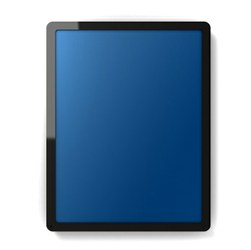|
|

By
Jesse Cryderman
As the development of wireless technologies continues to advance, the very definition of a mobile device is changing. A few years ago, mobile devices were either handsets or awkward USB devices for laptop-equipped business users on the go. Today the landscape has expanded and the map of mobile keeps getting larger, as each new device promises to fulfill a need that hasn’t been met by traditional mobile.
Additionally, service providers are taking an active role in putting new mobile devices in the hands of users. This time, instead of subsidizing the hardware—the model for cell phones—providers are subsidizing the connectivity with limited free data plans or covering the cost of data traffic (to wit: Amazon’s Kindle). So what’s new in 2011, and how is the face of mobile changing?
Tablets
Although tablet computers have been
around for several years, it wasn’t until
the launch of the iPad that this
hardware platform really caught fire.
|
|
The diminutive tablet is big business—tablets are projected to outsell laptops by 2011 and desktops by 2012. |
|



reminds you to buy a gift for your
anniversary. We’ve perhaps pictured
such devices, or seen them in sci-fi
movies, but they are now becoming a
part of the fabric of everyday living.
|
|
|
|
|

With a larger screen and more robust
hardware specs than a smartphone, a
tablet offers a level of computing and
user experience that was previously
only available on a laptop, but in a
more portable form factor. And while
tablets are available without cellular
capabilities, the platform really shines
when enabled with broadband mobile
wireless. Since the iPad has opened up
the market, many offerings running the
Android OS are on the way, as well as
tablets running Windows 7.
“The all-in-one nature of media tablets will result in the cannibalization of other consumer electronics devices such as e-readers, gaming devices and media players,” said Carolina Milanesi, research vice president at Gartner Research.
Tablets are certainly the fastest growing new mobile device platform. Forrester Research projects tablets will outsell laptops by 2012, and eclipse desktop sales by 2013. Goldman Sachs recently predicts 54 million tablets will be sold in 2011, climbing to nearly 80 million in 2012. Gartner research also envisions explosive growth for tablets, projecting numbers similar to Goldman Sachs.
Hybrid Devices
Imagine driving a car that gives you
directions to your daughter’s new
apartment, sends a message to her
when you are five minutes away, and
|
|

Cellular connectivity can be installed in just about any device, stretching the traditional definition of the mobile experience. Telematics systems like OnStar, Ford Sync, and Lexus Safety Connect combine GPS navigation and “walled garden” cellular connectivity to offer convenience and emergency services. This brand of mobile experience will soon be much more than a call center coupled with infotainment and decent directions, however. Alcatel-Lucent demoed the “LTE Connected Car” at 4GWorld 2010, a vehicle with an integrated LTE/4G broadband radio link that “brings cloud-based multimedia services into the car.” This means streaming video on demand and mobile gaming…to multiple in-vehicle monitors.
Sometimes cellular connectivity is external, like the ubiquitous USB cellular dongles, and turns another device into a mobile platform. Such is the Sprint ZTE PEEL, a case-like cradle device for the iPod Touch that enables access to the Sprint 3G cellular network (essentially turning it into an iPhone).
There are also many devices that are not yet commercialized, or have been released in a Wifi-only version first to test marketability. One device is the brand new Sony Dash, a sub-$200 “personal internet viewer” with a touchscreen and 1,000 free apps that dish up customized real-time information. The Dash is less than a tablet but more than a handset; imagine an internet-connected version of the small televisions designed for kitchen use.
|
|
|







